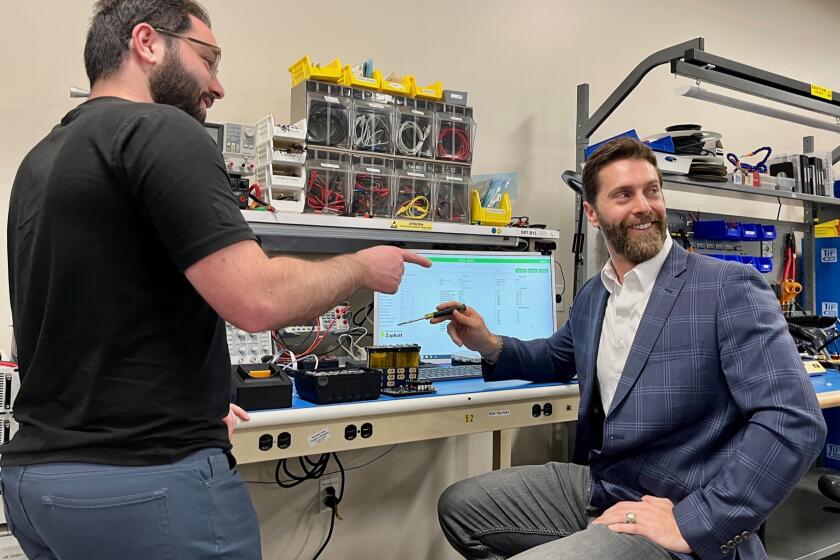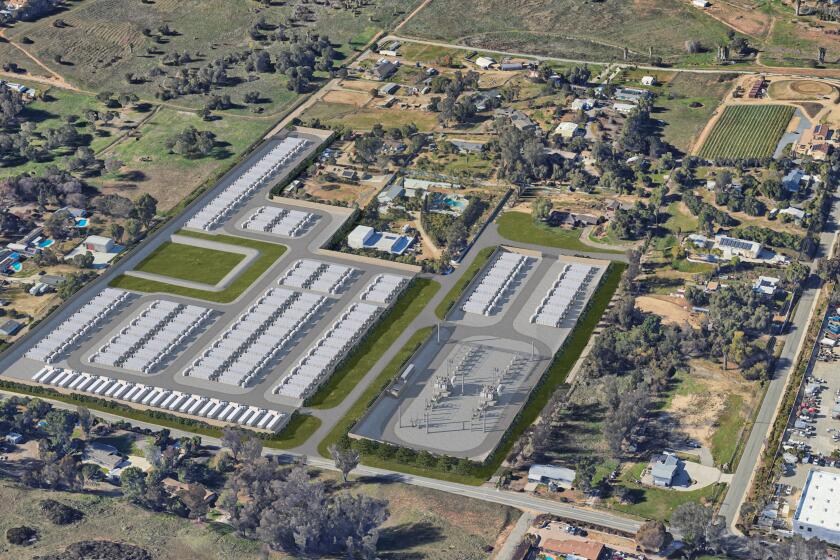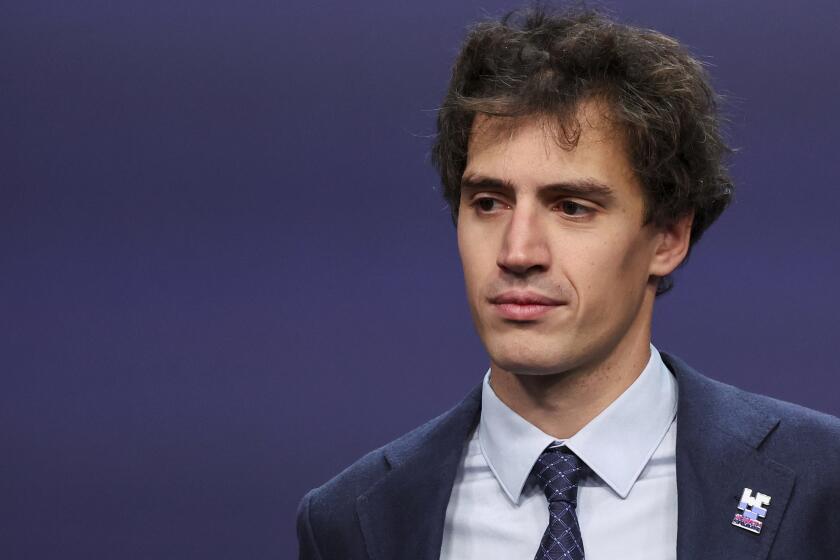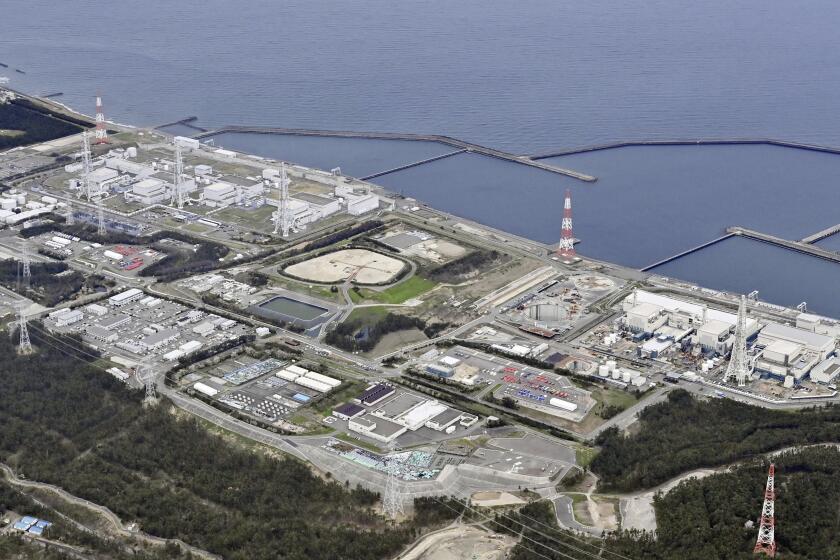General Atomics wins $3.3M contract to assist in nuclear fusion project in France
ITER hopes to unlock fusion’s vast potential for commercial power
San Diego-based General Atomics has already taken on a major role in the United States’ contribution to an international, multi-billion dollar nuclear fusion experiment under construction in France. On Friday, the company announced it will do a little bit more.
General Atomics won a $3.3 million contract to develop assemblies that will transmit microwave heating into the centerpiece of the project, called ITER.
In the works for more than a decade, ITER has brought together scientists and engineers from 35 countries to show whether nuclear fusion can be applied to deliver a practical source of clean and nearly limitless energy.
Expected to begin operations in December 2025, ITER will see nations — the U.S., China, Japan, Korea, Russia, India as well as the European Union — contributing individual pieces of the project that are being put together in Cadarache, France. The US ITER team, based at the Oak Ridge National Laboratory in Tennessee, awarded the microwave assemblies contract to General Atomics.
For more than 30 years, General Atomics has earned a reputation as a leader in developing microwave transmission line components.
The “waveguide” assemblies will be used in ITER’s electron-cyclotron heating system, known as ECH, that will heat the plasma — large quantities of ionized particles — to the incredibly high temperatures needed to make the fusion process work. The assemblies, produced at General Atomics’ Magnet Technologies Center, are composed of ultra-straight metal tubes that are nearly 10 feet long.
“The ECH system is a critical component for ensuring ITER’s successful operation,” Jim Anderson, head of the company’s Radio Frequency Technology department, said in a statement.
The Magnet Technologies Center is also where General Atomics is fabricating what has been described as the very heart of the ITER project — what’s called the Central Solenoid. Standing 59 feet tall, the Central Solenoid will be the largest pulsed superconducting magnet ever built.
Workers, scientists and engineers at General Atomics are fabricating the solenoid in separate modules that will be shipped overseas to France and assembled.
Six modules, each 7 feet tall, 14 feet in diameter and 250,000 pounds, will be stacked atop one another to create the solenoid. Each module is made up of 3.6 miles of electrical conductor segments and wrapped with six layers of insulating tape totaling more than 180 miles. A seventh module, a spare, is also being constructed in case something goes wrong with one of the others.
General Atomics has contributed in multiple ways to ITER, which is Latin for “the way” and is pronounced “eater.”
Through the U.S. Department of Energy, General Atomics operates the DIII-D National Fusion Facility, which is the largest operating magnetic fusion research facility in the country. Discoveries and advancements at the facility have informed the design and operation of ITER.
The scale of the ITER project is ambitious — literally, creating a star on earth.
Nuclear fusion differs from nuclear fission, which is the process used in commercial nuclear power plants, such as the now-shuttered San Onofre Nuclear Generating Station. Fission splits the nuclei of atoms to create power while fusion causes hydrogen nuclei to collide and fuse into helium atoms that release tremendous amounts of energy.
Fusion technology was critical in the development of the hydrogen bomb but as an energy source, no commercial fusion reactors exist. In fact, fusion power has been generated only for very short periods in the laboratory.
The ITER project will not capture the energy it produces as electricity, but hopes to pave the way for the development of future fusion power plants.
Advocates for fusion say, if harnessed, it would generate virtually inexhaustible power while emitting no greenhouse gases and leaving no long-lived nuclear waste behind. If any disturbance occurs during the fusion process, the plasma cools within seconds and the reaction stops, thereby preventing the risk of a meltdown or accident like the one at Fukushima.
Fusion as an energy source has its doubters, though. Since the 1950s, there’s been a running joke in the industry that fusion as an electricity source is always 30 years away.
ITER has been running behind schedule and over budget. Twenty years ago, the project was expected to cost about $7 billion but more recent estimates say that by the time the project is operational, the cost may be 10 times higher.
The U.S. contribution accounts for about 9 percent of ITER’s costs.
“ITER is clearly an act of confidence in the future,” French President Emmanuel Macron said at a ceremony at the ITER site earlier this year. “The greatest advances in history have always proceeded from daring bets, from journeys fraught with difficulty.”
Get U-T Business in your inbox on Mondays
Get ready for your week with the week’s top business stories from San Diego and California, in your inbox Monday mornings.
You may occasionally receive promotional content from the San Diego Union-Tribune.










